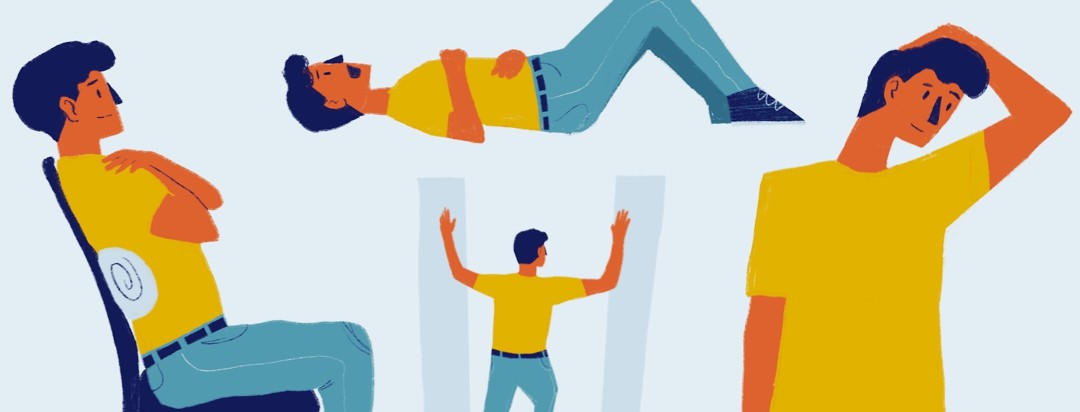Stretching for Costochondritis Pain
Costochondritis is a type of chest pain felt at the costosternal joint, where the ribcage meets the breastbone. This disorder is associated with several conditions, one of which is ankylosing spondylitis (AS).1
Stretching for costochondritis caused by ankylosing spondylitis
Pain is often felt with deep breathing, reaching across the body, lifting heavy objects, and aerobic activities that involve exertion.1,2 Treatment may consist of NSAIDs, pain relievers, and heat/ice. This article will focus on movements and stretches that may help decrease pain associated with costochondritis.
Featured Forum
View all responsesBreathing is a complex process. Breathing involves not only movement of the lungs and diaphragm, but also the ribcage, thoracic spine (or mid-back), and activation of various muscles. When we inhale the thoracic spine moves into extension. As AS progresses, sometimes individuals develop an increased thoracic kyphosis or hunchback. If the thoracic vertebral joints are stiff or less mobile, the chest will not be able to expand as much making it difficult to take a deep breath. Self-thoracic mobilizations have been found to improve chest expansion measurements.2
Self-thoracic mobilizations
Seated in a hard-backed chair, place a large towel roll such as a beach towel or a foam roller perpendicular to the middle of your back. Cross your arms over your chest and slowly arch back, careful not to strain your neck. I usually repeat this 10 times. Adjust the roll-up or down just slightly and repeat again.
Doorway pectoral stretch
Another contributing factor to costochondritis pain and difficulty with taking a deep breath is the length of the pectoral muscles. These muscles make up the front of your chest. They are often tight and short due to the demands of everyday life such as jobs requiring typing or reaching out in front of the body. When the pectoral muscles are shortened they pull the shoulders and upper body forward making it difficult for the breathing muscles to work properly. Stretching the pectoral muscles may reduce strain on the breastbone and shoulders decreasing pain.3
Stand with both arms at shoulder height in a doorframe with your elbows bent to 90 degrees, also called “goal post” position. Relax your shoulders out of your ears. Step one leg forward feeling a stretch in your chest. I like to hold for up to 30 seconds, and repeat a few times.
Diaphragmatic breathing
Additionally, some muscles of the neck are used to assist with breathing when we are exerting ourselves or breathing improperly. These muscles include the upper trapezius, scalenes, and sternocleidomastoid (SCM).4,5 These muscles attach to the cervical (upper spine) or thoracic spine, and if short may contribute to decreased mobility of the neck, mid-back, and ribs. To decrease the use of these overactive muscles, diaphragmatic breathing may be of great benefit.5 In addition, stretching the neck muscles listed above may help to improve mobility.
Lay on your back with your knees bent. Place one hand on your belly and the other on your chest. Inhale or breath in filling your belly, your belly should rise but be careful to keep the chest still. Exhale or breathe out allowing the belly to fall. I like to repeat this for several minutes.
Upper trapezius stretch
Sit tall and side bend the head so that the ear moves towards the shoulder. I usually hold this stretch 20 seconds and repeat 3 times.
As always, please seek the guidance of a medical professional prior to starting any new exercise program. These stretches may work for some people but not others.
Community Poll
What topics are you interested in learning more about?





Join the conversation